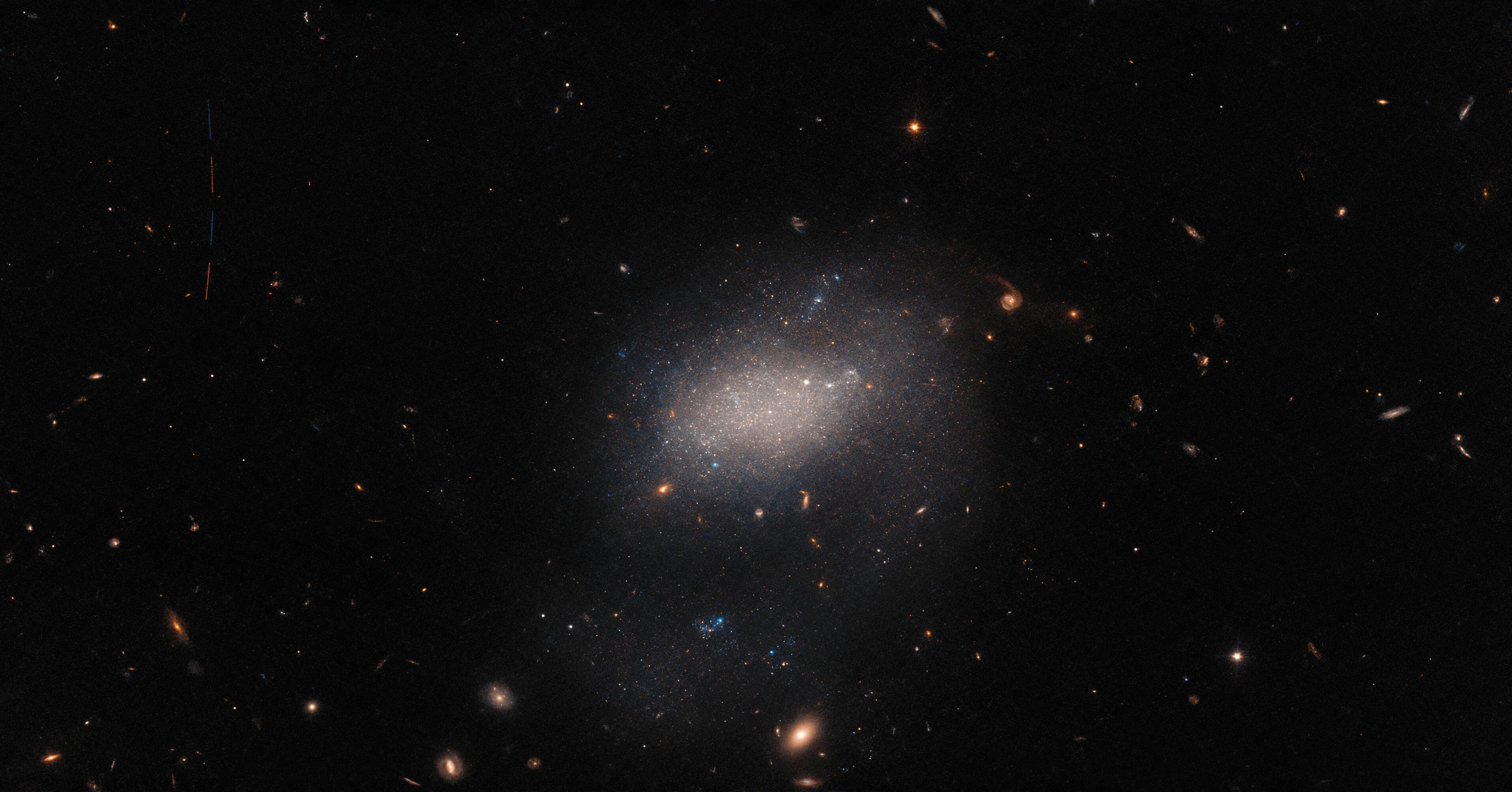2 min read

A host of astronomical objects are scattered across this image from the NASA/ESA Hubble Space Telescope. Background galaxies ranging from stately spirals to fuzzy ellipticals are strewn across the image, while a smattering of bright foreground stars are closer to home. In the center of the image, the vague shape of the small galaxy UGC 7983 appears as a hazy cloud of light. UGC 7983 is around 30 million light-years from Earth in the constellation Virgo. It is a dwarf irregular galaxy – a type thought to be similar to the very earliest galaxies in the universe.
This image also reveals a relatively nearby astronomical interloper. A minor asteroid in our own solar system streaks across the upper left-hand side of the image. The asteroid’s trail is visible as four streaks of light separated by small gaps. These streaks of light represent the four separate exposures that were combined to create this image. The small gaps between each observation reflect filter changes inside Hubble’s Advanced Camera for Surveys between exposures.
Capturing an asteroid was a fortunate side effect of a larger effort to observe every known galaxy close to the Milky Way. Hubble had imaged roughly 75% of all the Milky Way’s near galactic neighbors, when a group of astronomers proposed using the gaps between longer Hubble observations to capture images of the remaining 25%. The project was an elegant efficient way to fill gaps in Hubble's observing schedule and in our knowledge of nearby galaxies.
Text credit: European Space Agency (ESA)
Media Contact:
Claire Andreoli
NASA's Goddard Space Flight Center, Greenbelt, MD
301-286-1940







